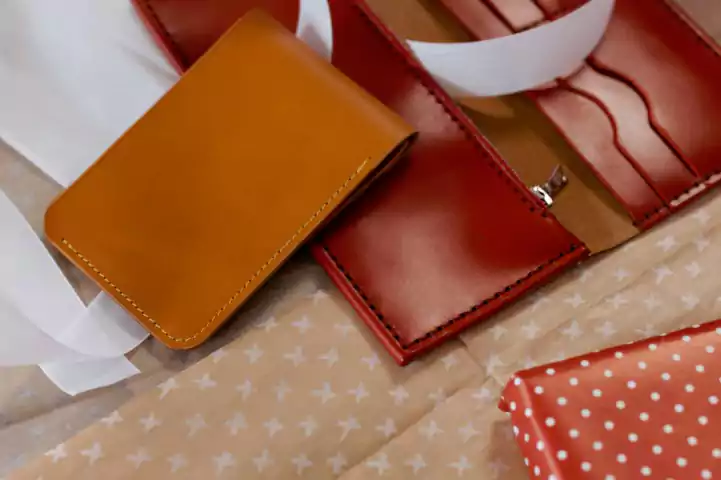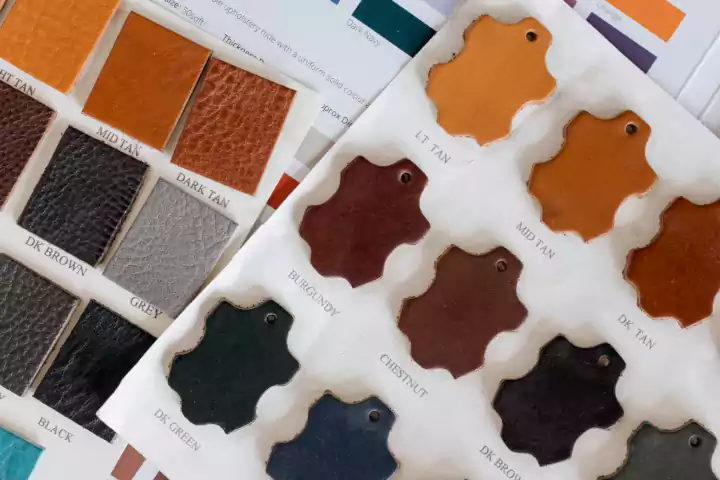Leather has been a highly prized
material for centuries, admired for its durability, versatility, and timeless
appeal. From fashion to furniture, leather products exude a sense of luxury and
sophistication. However, not all leather is created equal. In today's market,
we encounter two distinct types of leather: Real leather and synthetic leather.
This article delves into the world of leather, unraveling the secrets behind
these two materials, their production processes, and the pros and cons of each.
Table of Contents
1. Introduction
2. Understanding Real Leather
·
What is Real
Leather?
·
The Tanning
Process
·
Types of Real
Leather
3. Exploring Synthetic Leather
·
What is Synthetic
Leather?
·
The Manufacturing
Process
·
Types of
Synthetic Leather
4. Comparing Real Leather and Synthetic Leather
·
Quality and
Durability
·
Appearance and
Texture
·
Environmental
Impact
·
Price and
Affordability
5. Making an Informed Choice
·
Factors to
Consider
·
Intended Use and
Purpose
·
Personal
Preferences
·
Sustainability
and Ethics
6. Conclusion
7. FAQs (Frequently Asked Questions)
1. Introduction
Leather has long been associated with
luxury and craftsmanship. Its origins can be traced back to ancient
civilizations where animal hides were used for various purposes. Today, leather
remains a highly sought-after material, often associated with high-end fashion,
accessories, and furniture. However, the market now offers an alternative to Real
leather: synthetic leather. Understanding the differences between these two
materials is essential for making an informed choice when purchasing leather
goods.
2. Understanding Real Leather
What is Real Leather?
Real leather refers to leather made
from animal hides through a tanning process. It is obtained from the hides of
various animals, including cows, sheep, goats, and pigs. Real leather is highly
regarded for its natural qualities, such as breathability, flexibility, and
unique grain patterns.
The Tanning Process
The production of Real leather
involves several stages, with the tanning process being a crucial step. Tanning
converts raw animal hides into a stable and usable material. There are two
primary tanning methods: vegetable tanning, which uses plant-based substances,
and chrome tanning, which uses chromium salts. Each method results in distinct
characteristics and qualities of the leather.
Types of Real Leather
Real leather comes in various forms,
each with its own distinct properties. Some common types of Real leather
include full-grain leather, top-grain leather, corrected-grain leather, and
suede. Each type offers a unique combination of durability, texture, and
appearance, catering to different preferences and requirements.
3. Exploring Synthetic Leather
What is Synthetic Leather?
Synthetic leather, also known as faux
leather or artificial leather, is a man-made alternative to Real leather. It is
designed to mimic the appearance and texture of real leather while offering
additional benefits such as affordability and versatility. Synthetic leather is
typically made from a fabric base, which is then coated with various synthetic
materials such as polyurethane (PU) or polyvinyl chloride (PVC).
The Manufacturing Process
The manufacturing process of synthetic
leather involves several steps, including fabric preparation, coating
application, and finishing. The fabric base is treated with a coating material
to give it the appearance and texture of Real leather. Different coating
techniques and materials can be used to create different types of synthetic
leather, each with its own set of characteristics.
Types of Synthetic Leather
Synthetic leather comes in various
forms, each designed to meet different needs and preferences. Some popular
types of synthetic leather include polyurethane leather (PU leather), polyvinyl
chloride leather (PVC leather), and microfiber leather. These materials offer a
wide range of options in terms of durability, texture, and environmental
impact.
4. Comparing Real Leather and Synthetic
Leather
Quality and Durability
With proper care, Real leather
products can last for many years and even develop a beautiful patina over time.
On the other hand, the durability of synthetic leather varies depending on the
quality and type of material used. While some synthetic leathers may offer
decent durability, they generally tend to be less resistant to wear and tear
compared to Real leather.
Appearance and Texture
Real leather has a unique and natural
appearance that develops character with age. It carries the natural grain
patterns and imperfections of the animal hide, lending a distinct charm to
leather products. Synthetic leather aims to replicate the appearance and
texture of Real leather but may lack the authentic look and feel. However,
advancements in technology have allowed synthetic leather to closely resemble
real leather in many cases.
Environmental Impact
The production of Real leather
involves the use of animal hides, which raises ethical concerns for some individuals.
Additionally, the tanning process requires various chemicals, which can have
environmental implications if not managed properly. On the other hand,
synthetic leather eliminates the need for animal hides and can be produced with
fewer environmental impacts. However, the manufacturing processes of synthetic
leather also involve the use of chemicals and non-renewable resources.
Price and Affordability
Real leather is generally more
expensive than synthetic leather due to the cost of raw materials and the
labor-intensive tanning process. Synthetic leather, being a man-made material,
is often more affordable and accessible. This affordability makes synthetic
leather an attractive option for those seeking leather-like products on a
tighter budget.
5. Making an Informed Choice
Factors to Consider
When choosing between Real leather and
synthetic leather, several factors should be considered. These include quality,
appearance, durability, environmental impact, price, and personal preferences.
Understanding the specific requirements of your intended use and considering
your values and budget will help guide you towards the right choice.
Intended Use and Purpose
The intended use of the leather
product plays a significant role in determining whether Real or synthetic
leather is more suitable. For high-end fashion items or luxury furniture
pieces, Real leather may be the preferred choice due to its superior quality
and appeal. Synthetic leather, with its affordability and versatility, can be a
practical option for everyday accessories, upholstery, or vegan-friendly
alternatives.
Personal Preferences
Personal preferences, such as texture,
smell, and the desire for a natural or vegan product, can influence the choice
between Real and synthetic leather. Some individuals may appreciate the
distinct characteristics and craftsmanship of Real leather, while others may
prioritize affordability and sustainability.
Sustainability and Ethics
For those concerned about animal
welfare and environmental sustainability, synthetic leather offers a
cruelty-free and potentially more eco-friendly alternative. However, it is
essential to consider the environmental impact of synthetic materials and
choose options that are produced using responsible manufacturing processes.
6. Conclusion
In the world of leather, the choice
between Real leather and synthetic leather boils down to personal preferences,
values, and practical considerations. Real leather boasts unmatched quality,
durability, and a unique appeal rooted in centuries of craftsmanship. Synthetic
leather, on the other hand, offers affordability, versatility, and the
potential for more sustainable production. By understanding the characteristics
and qualities of each material, consumers can make informed decisions when
purchasing leather products.
7. FAQs (Frequently Asked Questions)
·
Is synthetic leather as durable as Real
leather?
Synthetic leather varies in durability
depending on the quality and type of material used. While some synthetic
leathers can offer decent durability, they generally tend to be less resistant
to wear and tear compared to Real leather.
·
What is the environmental impact of Real leather
production?
The production of Real leather
involves the use of animal hides and various chemicals during the tanning
process. Proper management of chemicals and waste is crucial to minimize
environmental impacts.
·
Is synthetic leather a vegan-friendly option?
Yes, synthetic leather is considered a vegan-friendly alternative as it does not involve the use of animal hides.
·
Can synthetic leather look and feel like Real
leather?
Advancements in modern technology have
facilitated the development of synthetic leather, enabling it to closely mimic
the appearance and texture of Real leather. However, there may still be
differences in the authentic look and feel.
·
Which is more affordable, Real leather or
synthetic leather?
Synthetic leather is generally more
affordable than Real leather due to the cost of raw materials and the
labor-intensive tanning process involved in producing Real leather products.





